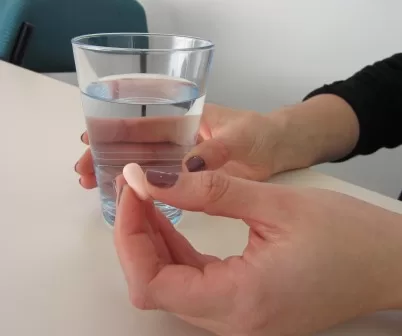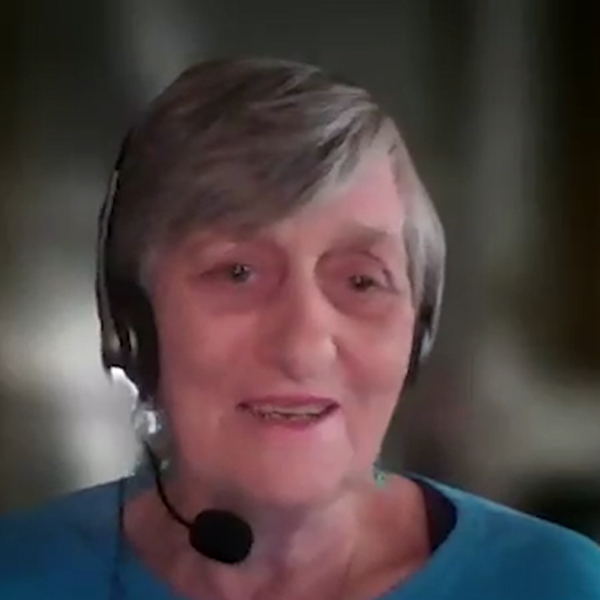Simon is an Australian community member with haemophilia who has been cured of hepatitis C. He is an architect, the co-director of an architecture design practice and a senior lecturer at a university where he is also doing his PhD.
This is a transcript of Simon’s presentation at the 2017 Australian & New Zealand Conference on Haemophilia & Rare Bleeding Disorders.

Preparing this presentation began with me wondering what it was that I could bring to the Conference regarding my experience with hep C and its treatment. I mean, a guy in his mid-40s takes a pill with no side effects for three months and is cured of a disease without any residual issues is hardly compelling listening. In conversation with Suzanne from HFA though, my jaw dropped when she told me that some people had not taken up treatment. I couldn’t believe that anyone would refuse the opportunity to finally rid themselves of that bomb ticking away inside them.
So I thought, well then, this is going to be about me giving reasons and experiences that you can relate to patients you encounter. Patients that may have reasons to avoiding or delaying taking up this quite amazing treatment. So I thought I’d imagine what those could be.
1. For those who are perhaps suspicious
As I, or I should say my mother and I, were in the early 80s when all of a sudden treatment became dangerous. It was about 1984, a year or so after I had already contracted hep C from blood products taken for a couple of tooth extractions. Never mind the opportunity to contract HIV had probably already come and gone, the fact was that trust in treatment had evaporated.
So what to do? As a mild haemophiliac I had the option, for the most part, of just waiting out the slow healing of my joint trauma injuries. And my mum, keen to find some way to ease my pain and bleeding from injuries to my joints looked into alternative medicines. Safe medicines, and as it turned out quite useless ones.
I recall lying on my couch strapping cotton wool soaked in arnica to my knee, or ankle, or elbow – tinctures – for years, of unnecessary pain and lost days suffered. It still makes me very angry to think someone, an adult, advised a haemophiliac child and their mother to undertake such nonsense.
So for those who are suspicious, I’ve tried things that don’t work too, and I also had good reasons. This treatment we are talking about isn’t that.
2. For those who have already lost time
I avoided any form of treatment for hep C following my ultimately unsuccessful interferon treatment in my early 20s. I had cleared the virus after the 6-month treatment. It was quite heartbreaking to discover it had returned in the 6thmonth following the end of treatment, and contributed to a period where I lost about a year of my studies – or of much of anything really – to that vague funk that accompanies interferon treatment, along with the distress of the unsuccessful aftermath that I found hard to take and the source of quite crippling anxiety.
Any description of the treatments I’ve been offered over the years since involved lengthy commitments of up to 12 months, the possibility of side effects and unsatisfying cure rates, particularly for my genotype. I had already lost time and was not keen to lose more, to give up time that could be spent on my post-grad studies, or later the projects I was working on such as Federation Square, later the time for my business I was building; it just didn’t seem worth it. I was yet to have a result from biopsy or ultrasound that showed the disease was doing any damage, so I waited. And I am now glad I did for the total time lost to this treatment, the one that worked, would be three trips to the pharmacy and two to the hepatitis clinic.
3. For those who are avoiding it
That said, waiting was not so easy. It’s a time spent wondering why I couldn’t feel comfortable to tell people that I have this disease, and that’s why I hide my toothbrushes away from accidental use by others.
The awkward explanations to new partners, when you aren’t exactly sure how much risk you are asking them to take.
The mornings after too many drinks the night before when you wonder if this really was the time that you’d finally done it to yourself, that the next fibroscan would come with bad news.
And so, like most people faced with the fear of bad news, I tried the avoiding it, missing scans and not chasing referrals, hoping my fears away. Finding out that I no longer have anything to avoid, no longer need to worry about some future where my luck runs out really was such a release.
4. The last reason…
The last reason I’ll give is not really a specific argument against why a person might refuse to take treatment. It’s really just to say that the moment when the specialist looked at my results and turned casually saying, yep, you’re cured – there was a tone he had like there was never any other possibility – that was one of the most incredible moments of my life. Thirty-three years of carrying this disease with all the strange sense of shame, worry and wondering what might happen into the future evaporated like it never happened. And that’s a feeling you really do want.
On reflection it’s the lack of drama in this story that’s the real point. After so many years the end was so easy and ordinary.

